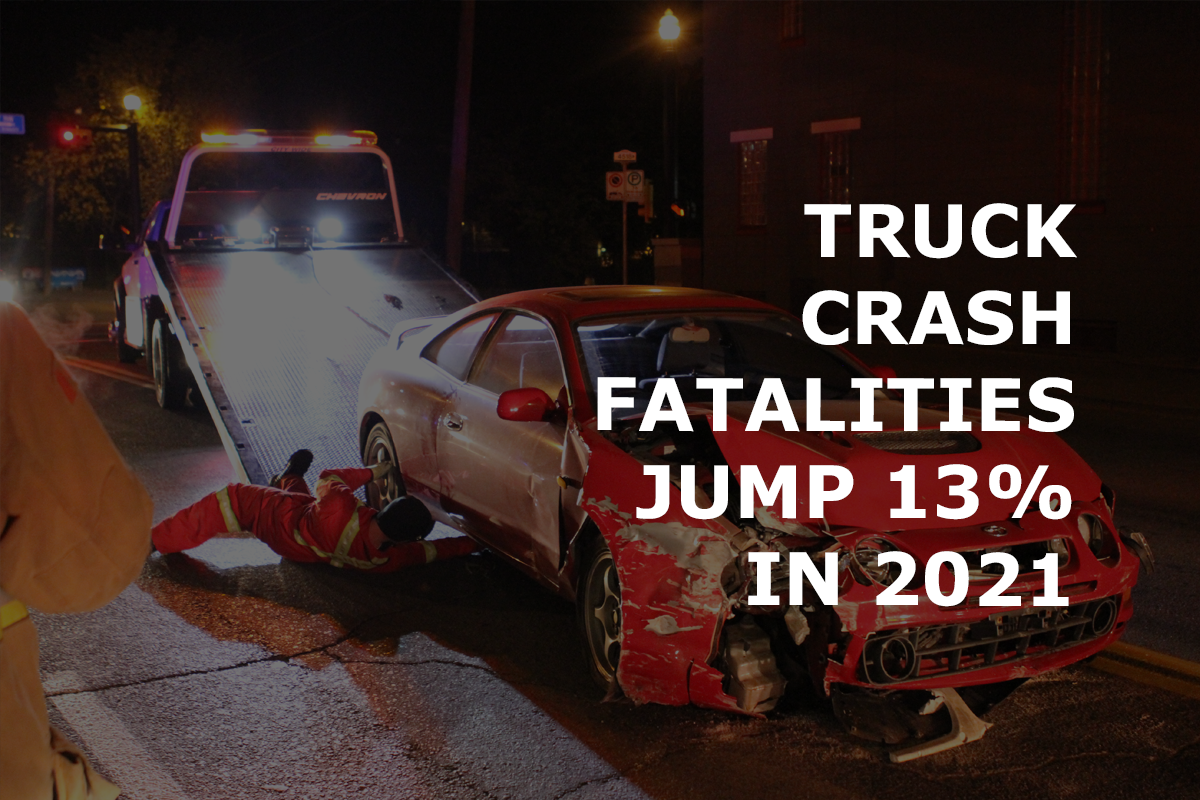The 2021 projections represent the highest number of motor vehicle fatalities since 2005 and the highest annual percentage increase in the recorded history of data in the Fatality Analysis Reporting System (FARS).
Data released by the National Highway Traffic Safety Administration (NHTSA) project that overall traffic fatalities in 2021 increased 10.5% to 42,915, compared to 38,824 fatalities reported in 2020, which reverses a downward trend before the pandemic.
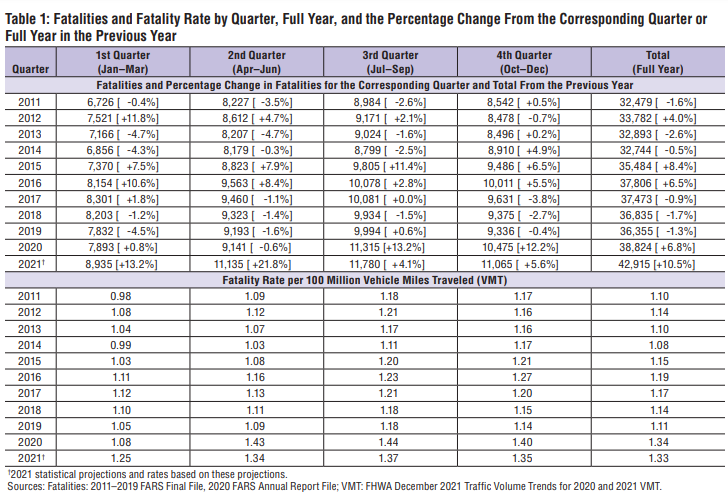
When it comes to large trucks over 10,000 lbs, total estimated fatalities in crashes involving at least one large truck, increased by 13% from 2020 to 2021, from 4,965 to 5,601.
That compares with a roughly 1% decline between 2019 and 2020 (5,005 to 4,965) and a 12% increase between 2019 and 2021 (5,005 to 5,601).
This estimate is based on involvement of large trucks, both in commercial and non-commercial use at the time of the crash.
NHTSA’s truck-related fatality estimate constitutes a record high, according to the Truck Safety Coalition, a 52% increase in truck crash fatalities since 2010. The coalition pointed out that despite passenger vehicles being safer, 97% of fatalities occur to passenger vehicle occupants in large truck crashes.
This data will only encourage regulators to push automatic emergency braking, install speed limiters, and pass legislation raising minimum insurance requirements for trucks from $750,000 to $2+ million.
What would fleets expect to see if insurance premiums increased? For a fleet currently paying $7,000 to $8,000 per truck per year, they can expect this to double.
For speed limiters, there is a 30-day period for public comments on a Notice of Intent (which over 11,000 comments have been submitted thus far) and data regarding the adjustment or reprogramming of ECUs.
If a rule is submitted, we will likely not see it affect drivers until 2024-2026 at the earliest.
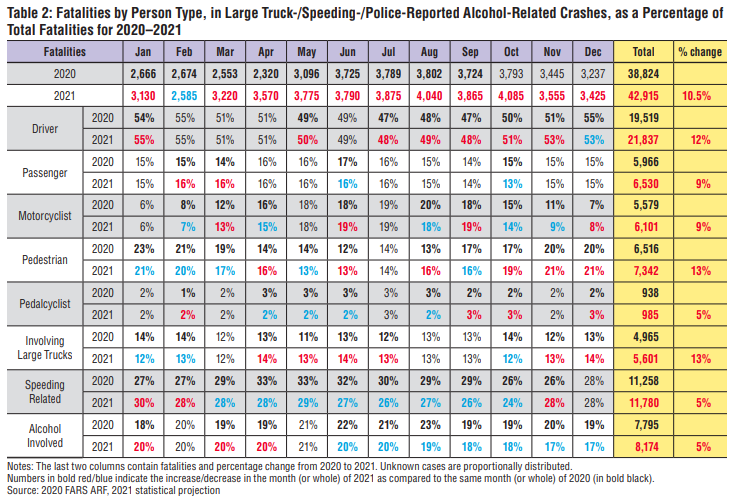
Examining the COVID pandemic effect
When looking at all motor vehicle crashes, the percentage increase in the second quarter of 2021 is the highest quarterly percentage increase in FARS data recorded history.
The third and fourth quarter of 2020 and the first and second quarter of 2021 showed significant increases in fatalities as compared to the corresponding quarters of 2019 and 2020.
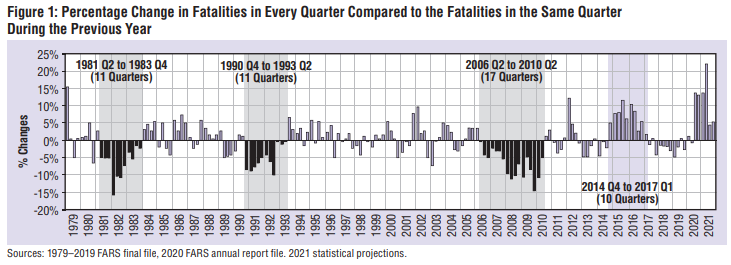
The pandemic stay-at-home orders started in mid-March 2020, followed by the first full month of stay-at-home measures that were in effect during April (the smallest VMT in this month).
- During May some States began to reopen in some way while almost all States partially reopened by June.
- After June, States continued to adapt their local and statewide COVID-19 guidelines and assess specific reopening and potential reclosing efforts accordingly.
Table 2 shows that fatalities are projected to have increased in January and March–December 2021.
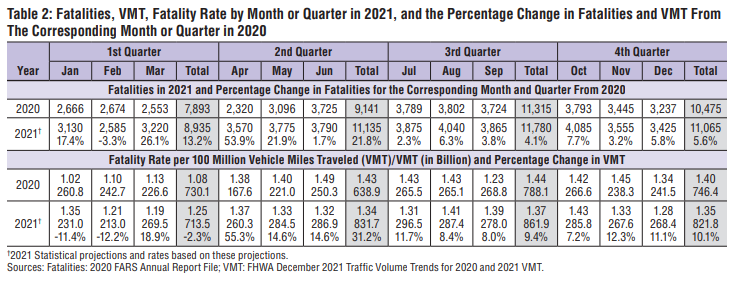
This data also projects detailed situations that highlight crash risk during the pandemic. Below are some of these interesting crash statistics:
- Passenger vehicle occupant fatalities decreased 2% during out-of-State travel from 2019 to 2020 due to the COVID-19 pandemic stay-at-home measures in 2020 but increased 15% from 2020 to 2021
- Speeding related fatalities greatly increased 17% from 2019 to 2020 and increased another 5% from 2020 to 2021
- Fatalities in police-reported, alcohol-involved crashes greatly increased 16% from 2019 to 2020 and increased another 5% from 2020 to 2021.
- Fatalities increases for rural interstate (up 15%), urban interstate (up 11%), urban arterial (up 15%), and urban collector/local roads (up 20%) from 2020 to 2021
- Fatalities during nighttime greatly increased 12% from 2019 to 2020 and increased another 11% from 2020 to 2021. Note that the total estimated fatalities during daytime increased as well by 11% from 2020 to 2021.
- Fatalities during the weekend greatly increased 9.5% from 2019 to 2020 and increased another 11% and 10% percent during the weekends and the weekdays, respectively, from 2020 to 2021.
For truckers, a driver’s responsibilities do not stop at the site of the accident.
A driver has 2 hours in which an alcohol test should be completed, however it must be completed within 8 hours. If the driver goes over the 2-hour mark, they must provide an explanation as to why there was a delay and the motor carrier must provide a written explanation and keep it in their company files.
A drug test needs to be completed as soon as possible; however, it must be completed within 32 hours. At times there might be a delay in the issuance of a citation, however as long as the citation is issued with 32 hours, a drug and alcohol test is required.
Stay protected and get a Quote for trucking insurance coverage
Reach out to CNS Insurance for help figuring out what coverage you need. If you have any questions or concerns, please call us at 800.724.5523 or email info@cnsinsures.com.
We recommend you start a custom quote online or call us directly to speak with a licensed trucking insurance professional.
Before we can get you an estimate, we are going to need some information.
Fill out a complete quote or quick quote to get started.


